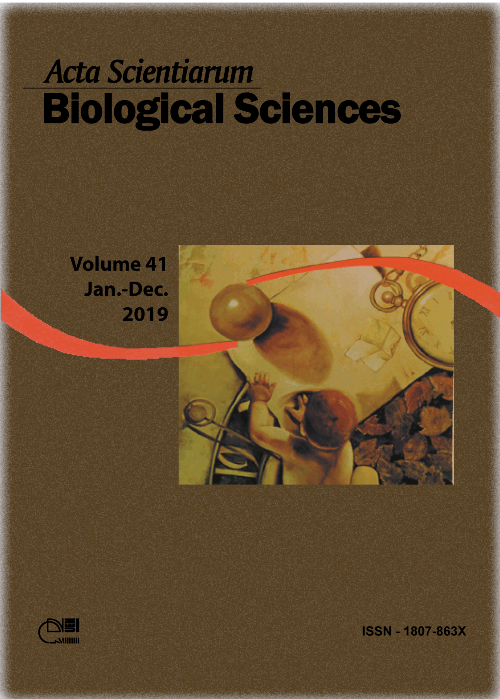Leaf area estimation for <i>Psychotria carthagenensis</i> and <i>Psychotria hoffmannseggiana</i> as a function of linear leaf dimensions
Resumo
Determining leaf area is important for studies involving plant growth and development. The aim of the present study was to obtain models for estimating leaf area of Psychotria carthagenensis and Psychotria hoffmannseggiana using linear measurements of leaf blades (length and width). Two hundred leaf blades of each species were collected in Parque Estadual Mata do Pau-Ferro in the municipality of Areia, Paraíba, Northeast Brazil. The equations evaluated for producing potential models included the following: linear, quadratic, potential and exponential. The criteria used to determine the best model(s) were as follows: high coefficient of determination (R²), low root-mean-square error (RMSE), low Akaike information criterion (AIC), high Willmott concordance index (d) and a BIAS ratio close to zero. All evaluated models satisfactorily estimated leaf area for the two species, but the equation ŷ = 0.6373 * LW0.9804 was the most appropriate for P. carthagenensis, while ŷ = 0.6235 * LW0.9712 was the most appropriate for P. hoffmannseggiana.
Downloads
DECLARAÇÃO DE ORIGINALIDADE E DIREITOS AUTORAIS
Declaro que o presente artigo é original, não tendo sido submetido à publicação em qualquer outro periódico nacional ou internacional, quer seja em parte ou em sua totalidade.
Os direitos autorais pertencem exclusivamente aos autores. Os direitos de licenciamento utilizados pelo periódico é a licença Creative Commons Attribution 4.0 (CC BY 4.0): são permitidos o compartilhamento (cópia e distribuição do material em qualqer meio ou formato) e adaptação (remix, transformação e criação de material a partir do conteúdo assim licenciado para quaisquer fins, inclusive comerciais.
Recomenda-se a leitura desse link para maiores informações sobre o tema: fornecimento de créditos e referências de forma correta, entre outros detalhes cruciais para uso adequado do material licenciado.












1.png)




3.png)













